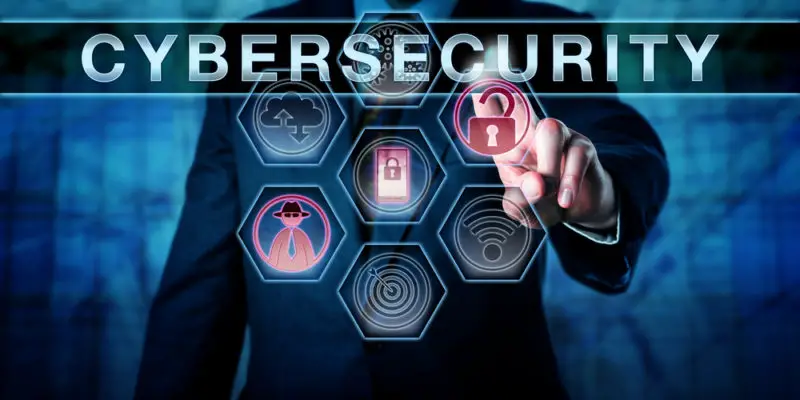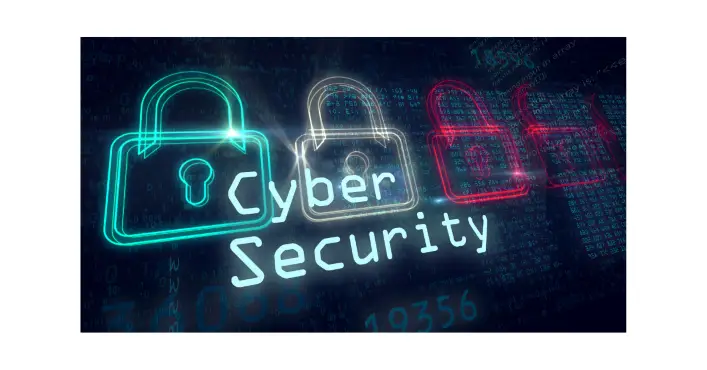Cybersecurity is a critical concern for organizations of all sizes. With the increasing number of cyber attacks, it is essential to have a robust cybersecurity strategy in place. The National Institute of Standards and Technology (NIST) has developed a framework to help organizations manage and reduce cybersecurity risks.
This framework provides guidelines for identifying, protecting, detecting, responding to, and recovering from cyber-attacks.
One key element of the NIST Cybersecurity Framework is using Key Risk Indicators (KRIs). KRIs are metrics used to measure and track the effectiveness of cybersecurity controls and identify potential vulnerabilities. Organizations can mitigate potential security threats by monitoring KRIs.
This article will explore eight key NIST Cybersecurity Risk Indicator examples. These KRIs can help organizations identify potential cybersecurity risks and take proactive measures to prevent them.
Organizations can enhance their cybersecurity defense and mitigate the risk of cyber attacks by implementing these KRIs.
Understanding NIST and Its Role in Cybersecurity
The NIST Cybersecurity Framework
The NIST Cybersecurity Framework is a set of guidelines, standards, and best practices designed to help organizations manage and reduce their cybersecurity risk.
It was developed by the National Institute of Standards and Technology (NIST) in response to an executive order from President Obama in 2013. The framework is voluntary and can be used by organizations of all sizes and in all sectors.
The framework comprises five core functions: Identify, Protect, Detect, Respond, and Recover. Each function is further broken down into categories and subcategories, which provide more detail on the specific actions that organizations can take to improve their cybersecurity posture.
For example, the “Identify” function includes categories such as “Asset Management” and “Risk Assessment,” while the “Protect” function includes categories such as “Access Control” and “Awareness and Training.”
National Institute of Standards and Technology (NIST)
The National Institute of Standards and Technology (NIST) is a non-regulatory federal agency within the United States Department of Commerce.
NIST’s mission is to promote U.S. innovation and industrial competitiveness by advancing measurement science, standards, and technology in ways that enhance economic security and improve our quality of life.
In the context of cybersecurity, NIST develops and promotes standards, guidelines, and best practices to help organizations manage and reduce their cybersecurity risk.

The NIST Cybersecurity Framework is one example of this work, but NIST is also involved in other initiatives, such as the development of cryptographic standards and the creation of cybersecurity guidelines for specific industries.
NIST plays a critical role in developing and promoting cybersecurity standards and best practices in the United States.
Its work helps organizations of all sizes and sectors improve their cybersecurity posture and reduce their risk of cyber attacks.
Key Risk Indicators in Cybersecurity
Defining Key Risk Indicators (KRIs)
Key Risk Indicators (KRIs) are measurable values that help organizations assess the level of risk associated with their cybersecurity posture. KRIs are used to monitor and track the effectiveness of security controls, identify vulnerabilities and threats, and measure the overall risk level of an organization’s IT infrastructure. KRIs are typically derived from a combination of metrics, data, and expert judgment.
KRIs are an important tool for effective cybersecurity risk management. They provide a way to identify and assess the level of risk associated with an organization’s IT infrastructure, which can help inform decision-making and resource allocation.
Kris can also help organizations prioritize their cybersecurity efforts by identifying the areas that are most vulnerable to attack.
The Importance of KRIs in Risk Management
KRIs are an essential component of cybersecurity risk management. They provide a way to measure and monitor the effectiveness of security controls, identify vulnerabilities and threats, and measure the overall risk level of an organization’s IT infrastructure.
KRIs can help organizations identify areas of weakness and prioritize their cybersecurity efforts accordingly.
Effective KRIs are based on a combination of metrics, data, and expert judgment. They should be tailored to the organization’s specific needs and should be regularly reviewed and updated to ensure that they remain relevant and effective.
KRIs should also be integrated into an organization’s overall risk management framework to ensure they are used effectively to manage cybersecurity risk.
KRIs are an essential tool for effective cybersecurity risk management. They provide a way to measure and monitor the effectiveness of security controls, identify vulnerabilities and threats, and measure the overall risk level of an organization’s IT infrastructure.
Effective KRIs are tailored to the organization’s specific needs and should be regularly reviewed and updated to ensure that they remain relevant and effective.
Integrating KRIs with the NIST Framework
KRIs can be used to monitor a wide range of cybersecurity risks, including threats to data confidentiality, integrity, availability, and risks related to network security, application security, and physical security.
Integrating KRIs with the NIST Cybersecurity Framework can provide organizations with a comprehensive approach to managing cybersecurity risks.
Alignment with NIST Cybersecurity Controls
The NIST Cybersecurity Framework provides a set of guidelines for organizations to manage and reduce cybersecurity risks. The framework consists of five core functions: Identify, Protect, Detect, Respond, and Recover.
Each function is further broken down into categories and subcategories that provide more specific guidance on implementing cybersecurity controls.
Organizations can align their KRIs with the NIST Cybersecurity Framework by mapping their KRIs to the framework’s categories and subcategories.
For example, an organization may develop a KRI that tracks their network’s failed login attempts. This KRI would align with the “Identity and Access Management” category under the “Protect” function of the NIST Cybersecurity Framework.
Utilizing NISTIR 8286 for KRI Development
NISTIR 8286 provides guidance on integrating cybersecurity and enterprise risk management (ERM) within an organization.
The document emphasizes the importance of using risk registers to set out cybersecurity risk and rolling up measures of risk usually addressed at lower system and organization levels to the broader enterprise level.
Organizations can use NISTIR 8286 to develop KRIs that align with their overall risk management strategy. For example, an organization may develop a KRI that tracks the number of successful or attempted cyber-attacks against their organization over time.
This KRI would align with the “Detection Processes” category under the “Detect” function of the NIST Cybersecurity Framework.
Organizations can develop a comprehensive approach to managing cybersecurity risks by integrating Key Risk Indicators (KRIs) with the NIST Cybersecurity Framework and utilizing NISTIR 8286 for KRI development.
This approach can help organizations identify, protect, detect, respond to, and recover from cybersecurity incidents.
Examples of Cybersecurity Risk Indicators
NIST Cybersecurity Framework provides a comprehensive, flexible, and repeatable approach for organizations to manage cybersecurity risk.
One of the framework’s most important aspects is identifying the key risk indicators (KRIs) that can help organizations monitor and assess their cybersecurity posture.
Incident Response and Management Indicators
Incident response and management indicators are used to measure an organization’s ability to detect, respond to, and recover from security incidents. Some examples of incident response and management indicators include:
- Time to detect and respond to security incidents.
- A number of security incidents.
- Time to recover from security incidents.
- The number of security incidents caused by insiders.
Network and Access Control Indicators
Network and access control indicators are used to measure an organization’s ability to secure its network and control access to its systems and data. Some examples of network and access control indicators include:
- Number of unauthorized access attempts.
- Number of successful and unsuccessful login attempts.
- Number of network devices with known vulnerabilities.
- Number of network devices with default or weak passwords.
Vulnerability and Patch Management Indicators
Vulnerability and patch management indicators are used to measure an organization’s ability to identify, prioritize, and remediate vulnerabilities in its systems and applications. Some examples of vulnerability and patch management indicators include:
- The number of critical vulnerabilities in systems and applications.
- Time to patch critical vulnerabilities.
- Percentage of systems and applications with up-to-date patches.
- A number of systems and applications with known vulnerabilities.
Compliance and Governance Indicators
Compliance and governance indicators are used to measure an organization’s compliance with laws, regulations, and internal policies related to cybersecurity. Some examples of compliance and governance indicators include:
- Number of compliance violations.
- Percentage of systems and applications compliant with internal policies.
- Percentage of systems and applications compliant with external regulations.
- The number of security incidents caused by non-compliance.
Overall, these key risk indicators can help organizations monitor and assess their cybersecurity posture and identify areas for improvement.
Organizations can gain valuable insights into their security posture by tracking key indicators over time, which can help them make informed decisions about resource allocation to improve their security.
Measuring the Effectiveness of Cybersecurity Controls
To ensure that an organization’s cybersecurity controls are effective, it is important to measure their performance regularly.
This helps identify potential vulnerabilities and take proactive measures to address them. The National Institute of Standards and Technology (NIST) has developed a set of cybersecurity risk indicators that can be used to measure the effectiveness of security controls.
Early Warning Signs and Proactive Measures
One of the key indicators of the effectiveness of security controls is the ability to detect early warning signs of potential attacks.
This includes monitoring for unusual network activity, such as increased failed login attempts or unauthorized access attempts. Organizations can prevent attacks by detecting early warning signs.
Other proactive measures that can be taken to improve the effectiveness of security controls include implementing security awareness training for employees, conducting regular vulnerability assessments, and implementing a security incident response plan.
Security Posture and Continuous Improvement
Another important indicator of the effectiveness of security controls is an organization’s cybersecurity posture. This refers to the overall state of an organization’s cybersecurity defenses.
It is possible to improve the effectiveness of an organization’s security controls by assessing its cybersecurity posture and identifying areas for enhancement.
Continuous improvement is also an important factor in measuring the effectiveness of security controls. This involves regularly assessing security controls’ effectiveness and making necessary improvements. Continuously monitoring and improving security controls helps organizations avoid potential threats and reduce the risk of cyber attacks.
Measuring the effectiveness of cybersecurity controls is essential to maintaining a strong cybersecurity posture. Organizations can protect their sensitive data by monitoring early warning signs, taking proactive measures, and continuously improving security controls.

Applying KRIs to Cybersecurity Risk Management Strategy
When it comes to cybersecurity risk management, Key Risk Indicators (KRIs) can be quite helpful in identifying risks and potential threats.
KRIs are specific measurements that help organizations track and assess the effectiveness of their risk management strategies.
Risk Assessment and Analysis
One of the primary benefits of using KRIs in cybersecurity risk management is that they help organizations identify and analyze risks.
Organizations can effectively identify potential threats and vulnerabilities by closely monitoring and tracking specific metrics. This information can then be used for a comprehensive risk assessment and analysis.
For example, one KRI that organizations can use is the number of successful or attempted cyber-attacks over time. Tracking this metric provides insight into cyber attack frequency and severity.
Additionally, organizations can use this information to identify patterns and trends, which can help guide risk management strategies.
Resource Allocation and Mitigation Planning
Another way that KRIs can be used in cybersecurity risk management is to allocate resources and plan for mitigation. Organizations can allocate resources to areas needing protection by identifying specific risks and threats.
For example, if an organization determines its network security is high-risk, it can allocate resources to improve network security measures. Additionally, KRIs can be used to track the effectiveness of mitigation efforts. Organizations can assess the effectiveness of their mitigation strategies by monitoring specific metrics.
KRIs are essential for any organization looking to improve its cybersecurity risk management strategy. Organizations can identify risks, allocate resources, and plan for mitigation by tracking specific metrics. Ultimately, KRIs can help organizations avoid potential threats and protect their critical assets.
Advanced Topics in Cybersecurity Risk Indicators
Operational KRIs and Their Impact on Business
Operational KRIs are a set of metrics that help organizations measure their performance in managing operational risks. Such KRIs can include the number of successful or attempted cyber-attacks against an organization over time, the number of incidents caused by insiders, the number of unpatched vulnerabilities in the system, and many more.
By having a set of operational KRIs, businesses can identify areas of weakness in their cybersecurity defenses and take necessary steps to mitigate risks.
This can help organizations avoid costly data breaches and other cyber incidents that can negatively impact their reputation and bottom line.
Cybersecurity Supply Chain Risk Management
Cybersecurity supply chain risk management (C-SCRM) is the process of identifying, assessing, and mitigating cybersecurity risks associated with the supply chain.
This process involves assessing the cybersecurity posture of suppliers, identifying potential vulnerabilities in the supply chain, and implementing measures to mitigate risks.
C-SCRM is critical for businesses that rely on third-party vendors and suppliers to provide products and services. By managing risks associated with the supply chain, businesses can avoid supply chain disruptions, data breaches, and other cyber incidents that can negatively impact their operations.
Managing risk is critical to enterprise risk management, and cybersecurity risk indicators are vital in this process. Businesses can identify and mitigate cybersecurity risks by implementing C-SCRM and a set of operational KRIs.

Conclusion
NIST Cybersecurity Key Risk Indicators are essential for organizations to identify and reduce cybersecurity risks. These indicators provide a way to measure and track the effectiveness of cybersecurity controls and identify potential vulnerabilities.
By utilising these indicators, organizations can make well-informed decisions about their cybersecurity readiness and risk management strategy.
The eight key NIST Cybersecurity Risk Indicators discussed in this article are just a few examples of the many KRIs organizations could use to measure and manage their cybersecurity risks. It is important for organizations to identify the KRIs that are most relevant to their industry and specific needs.
Implementing the best cybersecurity risk management and decision-making practices is crucial for organizations to avoid potential threats.
This includes having a strong governance, risk, and compliance (GRC) program and a qualified Chief Information Security Officer (CISO) to oversee cybersecurity efforts.
Organizations must be proactive in their approach to cybersecurity and continuously assess and improve their cybersecurity posture.
Organizations can better prepare for cyber-attacks and protect sensitive information by using NIST Cybersecurity Key Risk Indicators and other best practices.

Chris Ekai is a Risk Management expert with over 10 years of experience in the field. He has a Master’s(MSc) degree in Risk Management from University of Portsmouth and is a CPA and Finance professional. He currently works as a Content Manager at Risk Publishing, writing about Enterprise Risk Management, Business Continuity Management and Project Management.

